





The title gives the exact geographical location of Rodrigue island, a rather tiny dot in the Indian Ocean, the third component of the Mascareignes archipelago after Mauritius and Reunion islands and even lesser known than Reunion, let me help you discover this hidden peaceful place.
(Editor's Note: This article was originally published on February 8, 2009. Your comments are welcome, but please be aware that authors of previously published articles may not be able to promptly respond to new questions or comments.)
As stated above Rodrigue or Rodrigues island lays in South-Eastern Indian Ocean, some 650 km away from Mauritius and about 4500 km from the next coast of Australia. When I say tiny dot I mean it as Rodrigue is 18 km long and 8 km wide with a total area of 108 square km, to be compared with the impressive lagoon 200 square km hosting about 20 coral islets. Just like its two bigger sisters it is of volcanic origin, sprouting from the very bottom of the ocean some 1.6 to 1.8 million years ago but while Reunion tops at 3069 meters high with the Piton des Neiges, Rodrigue will not go higher than 393 meters at the Mont Luben. Situated not far North from the Capricorn tropic, temperatures vary year around between 28 and 35°C and global climate is divided between wet season (when cyclones can be frequent) and dry season when drought is the rule. 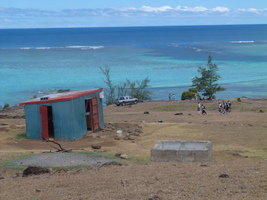
It first appeared on maps drawn by Arabian sailors who explored this part of the Ocean during the XI century and was then named ‘Dina a Rubi' but the ‘official' recorded discoverer was a Portuguese captain by the name of Don Diego Rodriguez hence the name of the place, this was in 1528. The first people to settle there were seven French Huguenots (Protestants who fled at the time of the Edit de Nantes) in the year 1693. Those people soon suffered from isolation and took off to Mauritius on a raft two years later. Then the French took over the whole archipelago between 1720 and 1810 and this started permanent residents, people started clearing forests and growing cereals, fruits, veggies and all matters of food. When the English conquered the island in 1807 there were some 100 permanent inhabitants, nowadays the islanders number 37000 with a great mix of whites, Africans, Malagasy and Indians who were brought first as slaves and later as paid workers. The common spoken language is Creole, very resembling the one of Mauritius but quite hard for Reunion Creole speakers, French and English are the official languages. 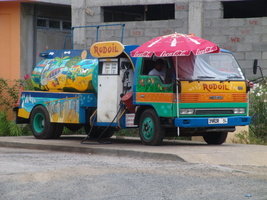 Administratively attached to Mauritius and therefore part of the Commonwealth until 1967 when independence was proclaimed, it has since then got a semi-autonomous status and though largely dependent on Mauritius it has a separate governor. The island lives on a rather slow kind of life, cars are sparse, there is no industry hence very little pollution. People live on fishing, chickens and goats, tourism has somewhat developed since the building of an airstrip but it remains extremely small compared to Mauritius which relies on luxurious tourism.
Administratively attached to Mauritius and therefore part of the Commonwealth until 1967 when independence was proclaimed, it has since then got a semi-autonomous status and though largely dependent on Mauritius it has a separate governor. The island lives on a rather slow kind of life, cars are sparse, there is no industry hence very little pollution. People live on fishing, chickens and goats, tourism has somewhat developed since the building of an airstrip but it remains extremely small compared to Mauritius which relies on luxurious tourism. 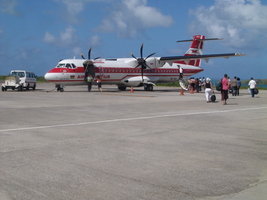 The airstrip itself it small enough so as to forbid the landing of large airplanes and only screw-propelled ATR 47 fly to and from Mauritius ninety minutes away, there are also two cargo boats which can accommodate a few passengers and will take between 36 and 48 hours to Mauritius depending on the sea and currents.
The airstrip itself it small enough so as to forbid the landing of large airplanes and only screw-propelled ATR 47 fly to and from Mauritius ninety minutes away, there are also two cargo boats which can accommodate a few passengers and will take between 36 and 48 hours to Mauritius depending on the sea and currents. 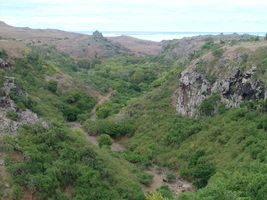
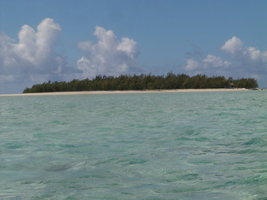 Like the other islands of Reunion and Mauritius, Rodrigue was an isolated natural paradise where plants and animals developed freely for ages before men set foot on them and began the usual slashing and killings. As there were no big predators some strange form of life developed such as the ‘solitaire' (Pezophaps solitaria) a big bird which could not fly and was hunted just using sticks and stones, it soon disappeared just like did its close cousin on Mauritius, the famous ‘dodo' (Raphus cucullatus).
Like the other islands of Reunion and Mauritius, Rodrigue was an isolated natural paradise where plants and animals developed freely for ages before men set foot on them and began the usual slashing and killings. As there were no big predators some strange form of life developed such as the ‘solitaire' (Pezophaps solitaria) a big bird which could not fly and was hunted just using sticks and stones, it soon disappeared just like did its close cousin on Mauritius, the famous ‘dodo' (Raphus cucullatus). 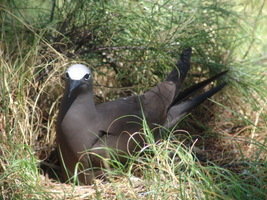 The land was also host to giants tortoises, another easy and abundant source of flesh. Forests and bushes where also rapidly cleared and the raising of goats and cows turned most of the island in grassland which most often turned to bare areas with the combination of droughts and tropical storms.
The land was also host to giants tortoises, another easy and abundant source of flesh. Forests and bushes where also rapidly cleared and the raising of goats and cows turned most of the island in grassland which most often turned to bare areas with the combination of droughts and tropical storms.
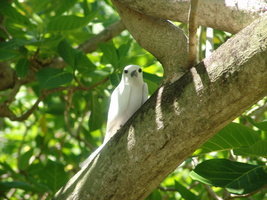 What remains probably the most preserved is the undersea world, the large lagoon is host to many species of corals, fishes, tortoises and various forms of animal and vegetal life. One of the various islets, the ‘île aux cocos' has been turned into a wildlife sanctuary where masses of seabirds live and lay eggs even on the ground as there are no predators, people are allowed short visits and the place is supervised sharply so as to keep it as natural as possible. Another large project of original plants replanting has started not far from the airstrip with the help of Australian-Mauritian donators who set up a nursery to propagate plants and already have success growing them in the open, on the same area they introduced giant tortoises from Aldabra and Madagascar for preservation.
What remains probably the most preserved is the undersea world, the large lagoon is host to many species of corals, fishes, tortoises and various forms of animal and vegetal life. One of the various islets, the ‘île aux cocos' has been turned into a wildlife sanctuary where masses of seabirds live and lay eggs even on the ground as there are no predators, people are allowed short visits and the place is supervised sharply so as to keep it as natural as possible. Another large project of original plants replanting has started not far from the airstrip with the help of Australian-Mauritian donators who set up a nursery to propagate plants and already have success growing them in the open, on the same area they introduced giant tortoises from Aldabra and Madagascar for preservation. 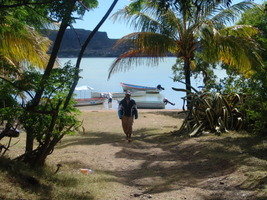
All in all Rodrigues is a very relaxing island with charming people and general feeling of being far away from the crazy world most of us experience, the good news is that the inhabitants and local political leaders want to keep that way so there will remain at least one place where people will not loose their daily smile.
Copyright © www.100flowers.win Botanic Garden All Rights Reserved